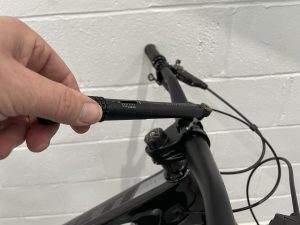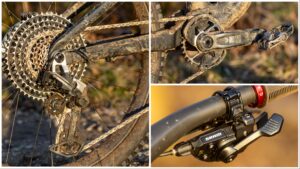Carefully considered build kit makes it a very capable trail bike
Niner RIP 9 RDO 27.5 4-Star first ride
Built around twin-link suspension the Niner RIP 9 RDO 27.5 pumps out 140mm travel. Its Ribcage construction and shorter seat tube accommodate long droppers.
>>> Best mountain bike 2019: all you need to know
Niner RIP 9 RDO 27.5 4-Star need to know
- The first 27.5in bike from the original 29er brand
- 140mm travel trail bike that’s designed to run a 150mm suspension fork
- Two geometry setting via flip-chips in the upper link
- Available with four different build kits and a frame only option

In a world where bikes are designed by committee, and information is filtered through complex algorithms, it’s increasingly rare that brands pin their colours securely to a mast and aren’t swayed by passing trends or populism.
It’s probably not the best way to run a modern business though, so when the bike brand that pegged its name to a prevailing wheelsize announced that it was making a dramatic about-turn by launching it’s first 27.5in bike, I wasn’t really surprised, even if I was a little disappointed.
You see, the original Niner WFO was one of the very first longer travel 29ers that made me realised that big wheels had so much more to offer than improved efficiency for short-travel bikes.
In fact, with 29in wheels now being widely adopted by the fasted riders in both enduro and downhill racing, the timing couldn’t really be worse for Niner to release a 27.5in trail bike.

Fox Float DPX2 shock is tricky to inflate
So let’s take a closer look at it.
Make no mistake though, Niner hasn’t simply slapped smaller wheels and 2.5in tyres into the Niner RIP 3 29er. Both bikes use wheelsize specific frames where 5mm shorter chain stays and taller head tubes separate the 27.5in bikes from the 29ers.

Chain rattled on chain stay/lower link junction
The sizing on the 27.5in bike is also limited to S, M and L. Which makes complete sense, because if you’re over 6ft tall, you’d be making a beeline for the XL 29er.
Niner says that the latest RIP 9 is the longest, lowest and slackest version it’s ever made, and while that’s true, with a 458mm reach measurement on the size L in the low geometry setting, it is not particularly long by current trail-bike standards.

140mm suspension with flip-chip geometry adjust
Still at 5ft 11in, the bike felt balanced, even if a tad short for me. I ran it in the low geometry setting, which reduced the reach a touch, but I preferred the handing in the low position as it dropped the BB height by 7mm and slackened the head angle by a full degree.
Switching between the two geometry settings wasn’t as straightforward as I initially thought. That’s because the flip-chips in the upper link have small, fiddly secondary bolts, to ensure that they don’t work lose. That’s great for peace of mind, but the flipside is you wouldn’t want to drop one of the bolts trail side as you’d never find it again.

Instructions come written on the top tube
I also had an issue setting up the Fox Float DPX2 shock, as there wasn’t enough room between the valve stem of the shock and the reinforcing rib cage surrounding it to attach my digital shock pump. The solution is to use a pump with a shorter nozzle or a 90 degree adapter.
Once I got it set up to my liking it was obvious that the suspension on the RIP 9 tracks well with limited movement when pedalling up hill. On the descents it felt tight and agile and incredibly capable for a 140mm bike; that’s were the sacker 65deg head angle really helps. There was a disturbing amount of chain rattle from the bike though and, on closer inspection, it looked like the chain was hitting the underside of the chainsays were it meets the low-slung lower link.
There’s no faulting the contact points on the RIP Nine 4-Star build though. The 2.5in Maxxis tyres offer a great balance between the reduced rolling resistance of the Aggressor on the rear, combined with the increased cornering confidence of the softer 3C MaxxTerra Minion up front.
Confidence to push this bike hard is boosted further with the increased control the 800mm Race Face bar and 40mm stem instantly provide. Even the custom Niner saddle and grips felt good to the touch.
And, much I enjoyed riding the new Niner RIP 9 RDO 27.5, I’m still not entirely sure who this bike is for. Yes, the size small and medium are probably ideal for shorter rider who struggle to accommodate a the bigger 29in rear wheel, but the size L that I rode felt like it needed to be less compact if it going to rival the outright speed of 29er trial bike.
















